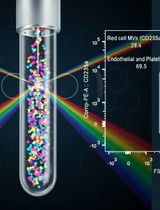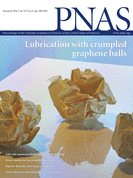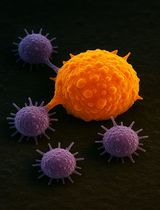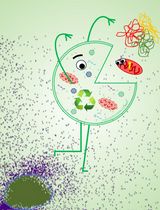- EN - English
- CN - 中文
Rapid Profiling Cell Cycle by Flow Cytometry Using Concurrent Staining of DNA and Mitotic Markers
DNA和有丝分类marker同步染色后利用流式细胞术快速分析细胞周期
发布: 2017年08月20日第7卷第16期 DOI: 10.21769/BioProtoc.2517 浏览次数: 14005
评审: Emilie BesnardAnonymous reviewer(s)

相关实验方案

外周血中细胞外囊泡的分离与分析方法:红细胞、内皮细胞及血小板来源的细胞外囊泡
Bhawani Yasassri Alvitigala [...] Lallindra Viranjan Gooneratne
2025年11月05日 1328 阅读
Abstract
The flow cytometric quantitation of DNA content by DNA-binding fluorochrome, propidium iodide (PI) is the most widely used method for cell cycle analysis. However, the commonly used methods are time-consuming and labor-intensive and are incompatible with staining of mitotic markers by fluorescent-labeled antibodies. Here, we report an optimized simple protocol for rapid and simultaneous analysis of characteristic mitotic phosphorylated proteins and DNA content, permitting the quantification of cells in mitosis, G1, S and G2 stage in a single assay. The protocol detailed here employs detergent-based hypotonic solution to rapidly permeabilize cells and allows simultaneous staining of DNA with PI and mitotic marker, phospho-Histone H3, with specific antibody within 20 min. The protocol requires only inexpensive and commercial available reagents and also enables a rapid and complete analysis of cell cycle profile.
Keywords: Cell cycle (细胞周期)Background
Cell cycle analysis by flow cytometry is mainly based on measurement of DNA content by stain with propidium iodide (PI). The stoichiometric nature of PI ensures the accurate quantification of DNA content and allows us to reveal the distribution of cells in G1, S and G2 cell cycle stage or in sub-G1 cell death stage, the latter of which is characterized by DNA fragmentation. Most of the commonly used methods for PI-based DNA quantification require fixation using alcohol or aldehyde, which is time-consuming and labor-intensive. In addition, these methods are incompatible with staining of mitotic markers by fluorescent-labeled antibodies. Therefore, we adopted and optimized a previous established hypotonic buffer to permeabilize cells, allowing simultaneous staining of DNA with PI and mitotic marker, phospho-Histone H3 (pH3), with pH3 specific antibody (Riccardi et al., 2006; Liu et al., 2016). This method enables a rapid (within 20 min) and comprehensive analysis of cell cycle profile (G1, S, G2 and M phase).
Materials and Reagents
- Falcon® 5 ml round bottom polystyrene test tube (Corning, Falcon®, catalog number: 352058 )
- Dulbecco’s phosphate buffered saline, no calcium, no magnesium (DPBS) (Thermo Fisher Scientific, Thermo ScientificTM, catalog number: 14200166 )
- Alexa Fluor® 647 rat anti-phospho-Histone H3 (pS28) (BD, BD Bioscience, catalog number: 558217 )
- Sodium citrate (Na3C6H5O7·2H2O) (Sigma-Aldrich, catalog number: 1613859 )
- TritonTM X-100 (Sigma-Aldrich, catalog number: T8787 )
- Propidium iodide (PI) (C27H34I2N4) (Sigma-Aldrich, catalog number: P4170 )
- Hypotonic lysis/PI buffer (see Recipes)
Equipment
- Centrifuge (Eppendorf, model: 5424 R )
- Flow cytometer (ACEA BIO, model: NovoCyte Flow Cytometer , 488-nm laser line, for excitation)
Software
- FlowJo_V10 is used for analyzing the flow cytometry data
Procedure
文章信息
版权信息
© 2017 The Authors; exclusive licensee Bio-protocol LLC.
如何引用
Shen, Y., Vignali, P. and Wang, R. (2017). Rapid Profiling Cell Cycle by Flow Cytometry Using Concurrent Staining of DNA and Mitotic Markers. Bio-protocol 7(16): e2517. DOI: 10.21769/BioProtoc.2517.
分类
癌症生物学 > 细胞周期检查点(checkpoint) > 基于细胞的试验
细胞生物学 > 基于细胞的分析方法 > 流式细胞术
您对这篇实验方法有问题吗?
在此处发布您的问题,我们将邀请本文作者来回答。同时,我们会将您的问题发布到Bio-protocol Exchange,以便寻求社区成员的帮助。
Share
Bluesky
X
Copy link











